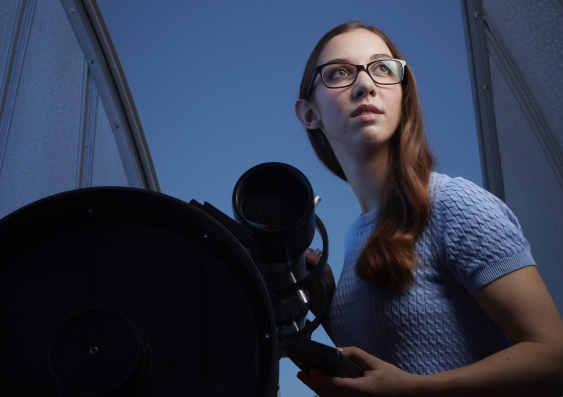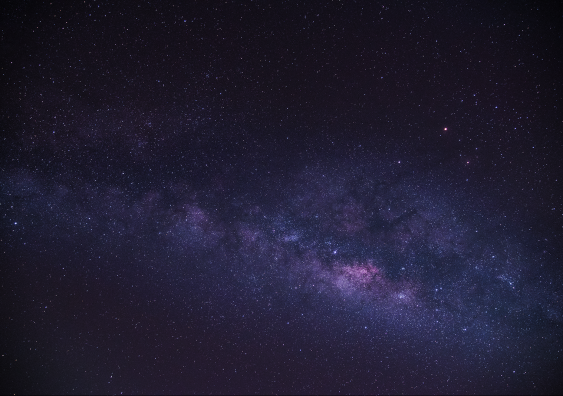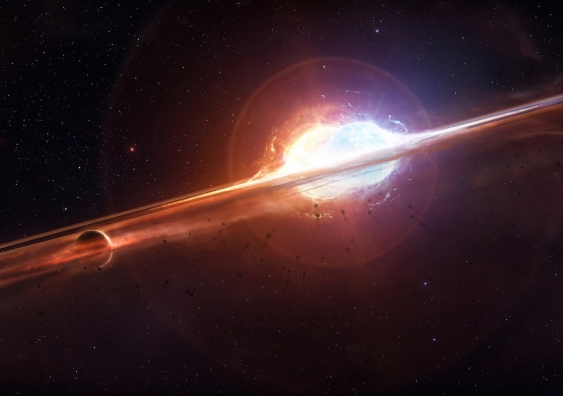Galaxies get more chaotic as they age, study finds
2024-04-08T10:37:00+10:00

Photo: Getty Images
An international team, including academics from UNSW, reports that age is the driving force in changing how stars move within galaxies.
Galaxies tend to start life with their stars rotating in an orderly pattern but in some, the motion of stars is more random. Until now, scientists have been uncertain about what causes these differences, but have theorised that the surrounding environment or the mass of the galaxy itself may play a part.
A new study, published recently in the journal , has found that the most important factor is in fact neither of these things. Instead, the latest results show that the tendency of the stars to have random motion is driven mostly by the age of the galaxy, and that the arrangement of stars gets messier over time.
This research, led by the Australian research centre , updates our understanding from previous studies which have suggested that environment or mass are the more important factors.
“This study provides key insights into the ongoing debate on how galaxies evolve in crowded environments, compared to those in solitude,” says Dr Jesse van de Sande, an astronomer from UNSW Sydney, and second author on the study. “It allows us to pinpoint which specific processes drive the dynamic evolution of galaxies in the Universe.”
Surveying 3000 galaxies
The team, spearheaded by Professor Scott Croom, an ASTRO 3D researcher at the University of Sydney, found that whatever way they approached their analysis, age always turned out to be the most important parameter for the movement of stars.
“Once you account for age, there is essentially no environmental trend, and it’s similar for mass,” says Prof. Croom. “If you find a young galaxy it will be rotating, whatever environment it is in, and if you find an old galaxy, it will have more random orbits, whether it’s in a dense environment or a void.”
ASTRO 3D – the ARC Centre of Excellence for All Sky Astrophysics in 3 Dimensions – is a $40m Research Centre of Excellence funded by the Australian Research Council (ARC) and nine collaborating Australian universities. The research team for this study also included scientists from Macquarie University, Swinburne University of Technology, the University of Western Australia, the Australian National University, the University of Cambridge, the University of Queensland, and Yonsei University in the Republic of Korea.
The research used data from observations made under the SAMI Galaxy Survey. The SAMI instrument was built in 2012 by the University of Sydney and the Anglo-Australian Observatory (now Astralis). SAMI uses the Anglo-Australian Telescope, at Siding Spring Observatory, near Coonabarabran, New South Wales.
The SAMI Galaxy Survey has surveyed 3000 galaxies across a large range of environments.
“The wide range of galaxy environments measured and studied in the SAMI survey are unique in enabling this level of detailed insight,” says Professor Sarah Brough, from the UNSW School of Physics, co-investigator on the study.
The latest results allow astronomers to rule out many processes when trying to understand galaxy formation and fine-tune models of how the Universe has developed.
How star formation changes over time
While this study provides new information on the movement of stars within a galaxy, the earlier work in the area is not necessarily incorrect.
Young galaxies are star-forming super-factories, while in older ones, star formation ceases.
“We do know that age is affected by environment. If a galaxy falls into a dense environment, it will tend to shut down the star formation. So galaxies in denser environments are, on average, older,” says Dr van de Sande. “The point of our analysis is that it’s not living in dense environments that reduces their spin, it’s the fact that they’re older.”
Our own galaxy, the Milky Way, is made up of two disks that have different thicknesses. The thick disk is more turbulent – it has stars on more chaotic orbits compared to the thin disk. But as it still has a thin star forming disk, it is considered a high spin rotation dominated galaxy.
“When we look at the Milky Way in detail, we do see something called the Milky Way thick disk. It’s not dominant, in terms of light, but it is there and those look to be older stars, which may well have been heated from the thin disk at earlier times, or born with more turbulent motion in the early Universe,” Prof Croom says.
More granular detail
The next steps will be to develop simulations of galaxy evolution in more granular detail.
“One of the challenges of getting simulations right is the high resolution you need in to predict what's going on. Typical current simulations are based on particles which have the mass of maybe 100,000 stars and you can't resolve small-scale structures in galaxy disks,” Prof. Croom says.
The Hector Galaxy Survey will help the ASTRO 3D team expand their work using a new instrument on the Anglo-Australian Telescope.
Professor Emma Ryan-Weber, Director of ASTRO 3D, says, “These findings answer one of the key questions posed by ASTRO 3D: how does mass and angular momentum evolve in the Universe? This careful work by the SAMI team reveals that the age of a galaxy determines how the stars orbit. This critical piece of information contributes to a clearer big-picture view of the Universe.”
Media enquiries
For enquiries about this story and to arrange interviews please contact Lilly Matson.
Tel: 0426 656 007
Email: l.matson@unsw.edu.au





